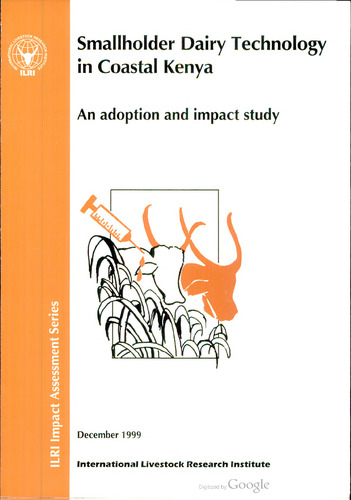Smallholder dairy technology in coastal Kenya. An adoption and impact study
Abstract
This study examines the factors influencing adoption of three related dairy technologies in coastal Kenya, and assesse the impacts of dairy adoption on household income, employment generation and nutritional status of pre-school children. The technologies studied were adoption of grade and crossbred dairy animals, planting of the fodder Napier grass and use of the infection and treatment method of immunisation against East Coast fever. A series of household surveys was conducted from mid 1997 to mid 1998. The descriptive results from surveys of 202 households in Coast Province indicate that adoption of a grade or crossbred dairy animal may result in substantial increases in household income, can generate paid (secondary) employment, and may improve the nutritional status of pre-school-age children in the household. Econometric analyses, which controlled for numerous confounding factors, provided less consistent support for the impact of adoption on household income and paid employment. It appears that neither the adoption nor productivity of dairying are constrained by poor availability of technology options. For dairy development activities on the coast, two areas merit attention: mechanisms for easing access to grade and crossbred dairy cattle, either through credit schemes or through self-help smallholder co-operatives, and reducing the disease risks associated with grade and crossbred dairy animals.

